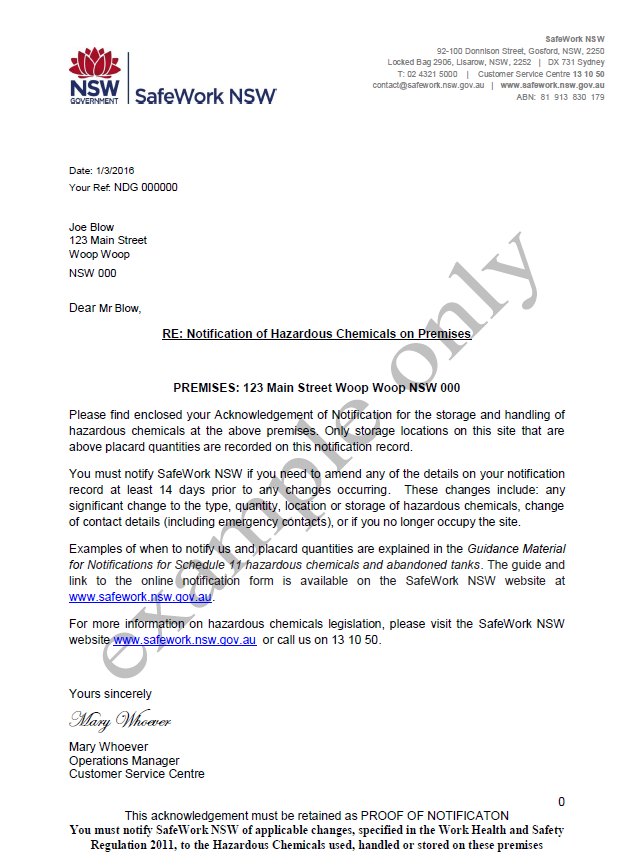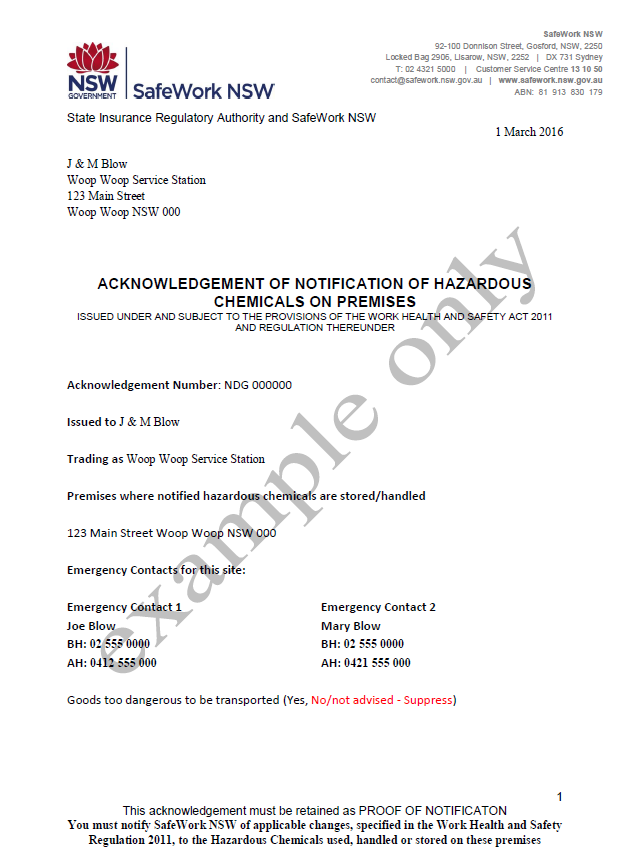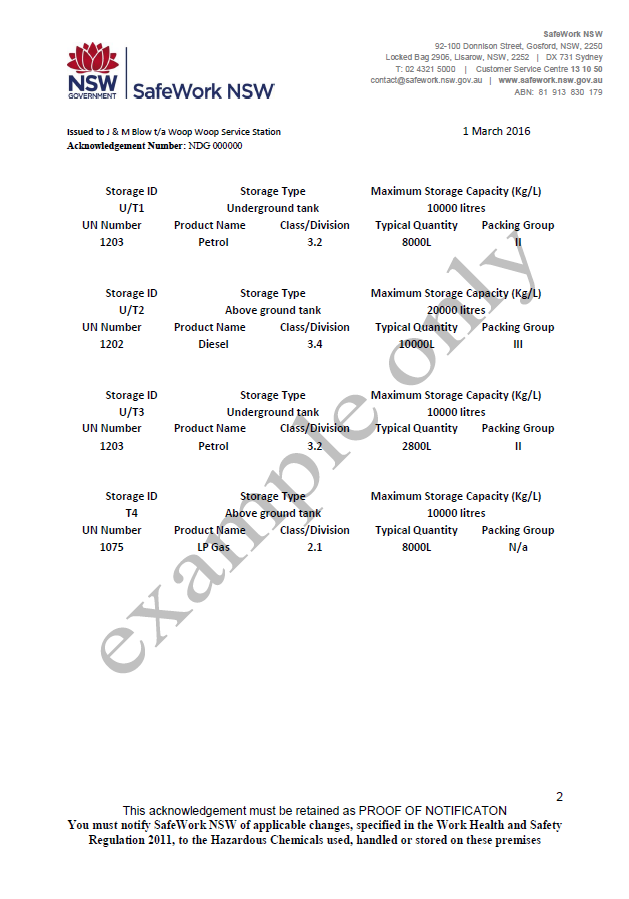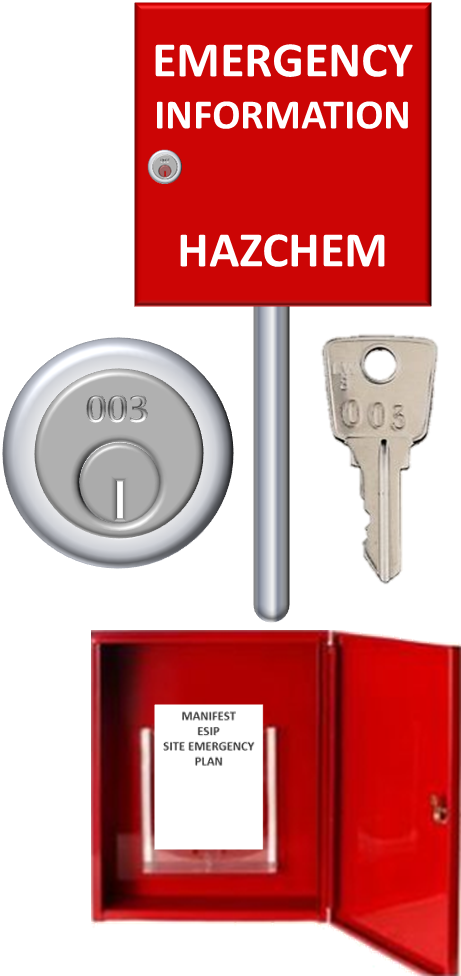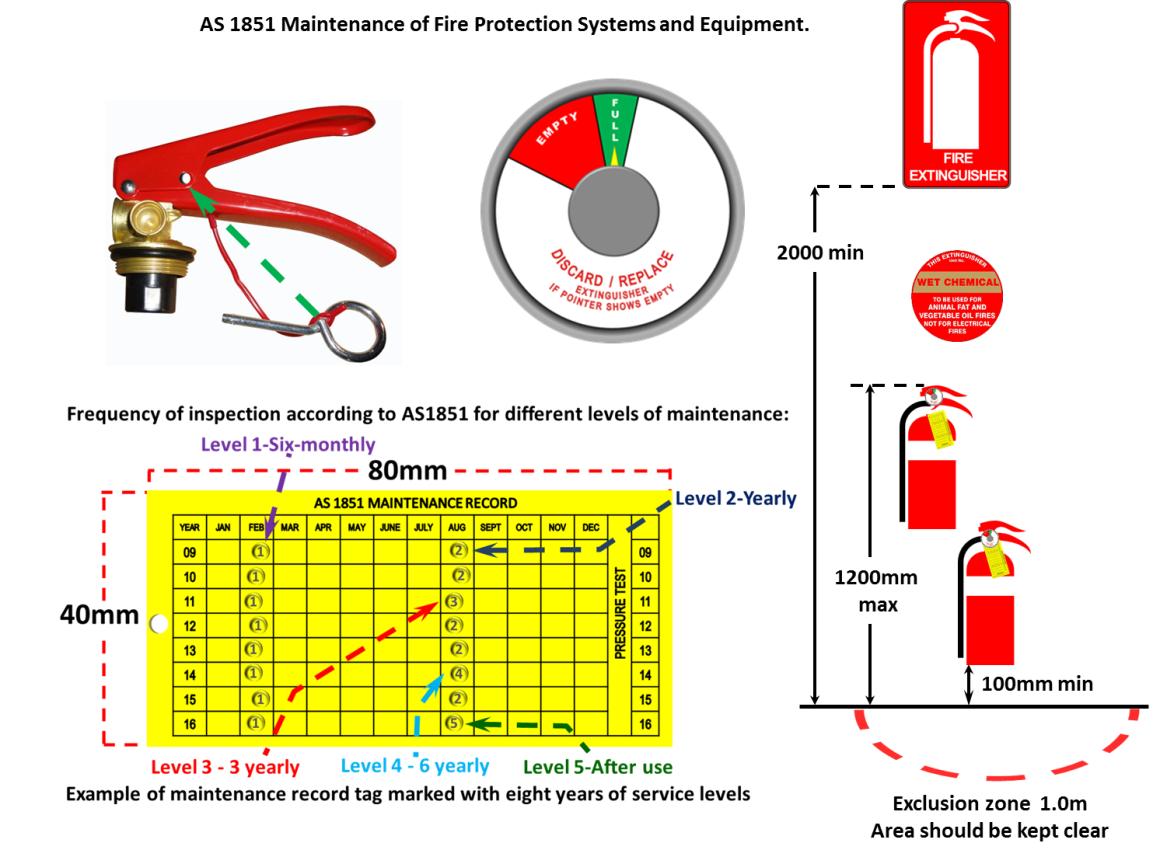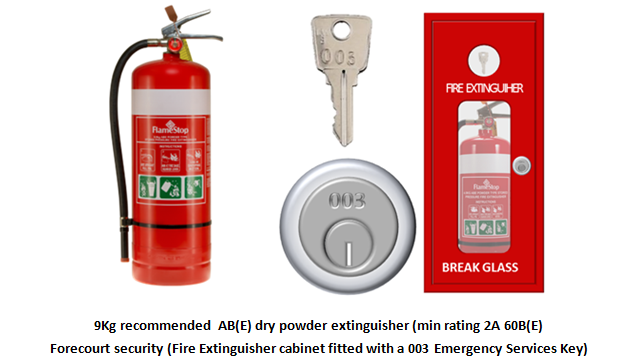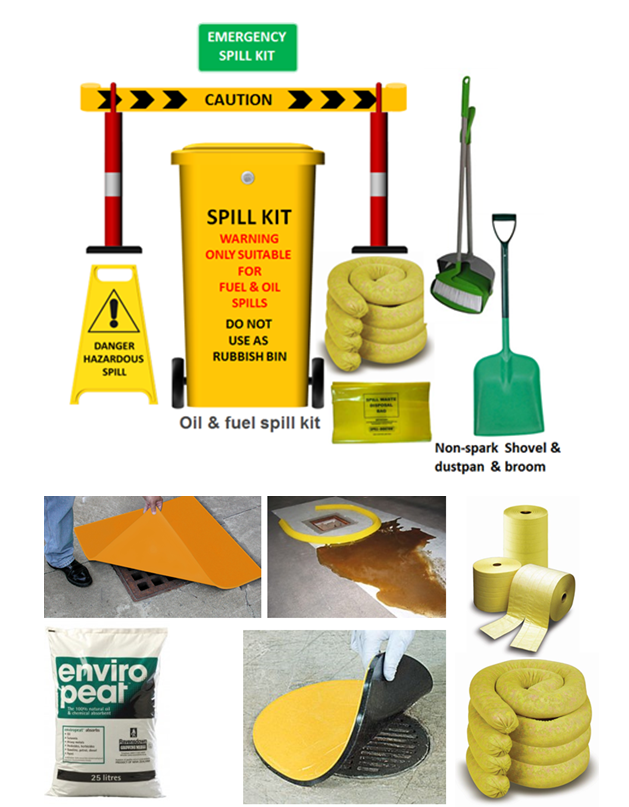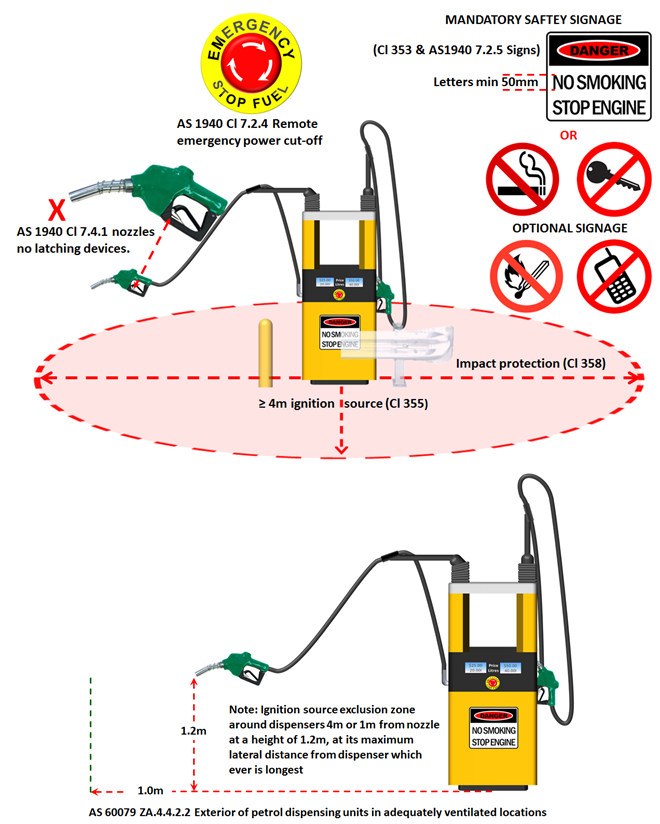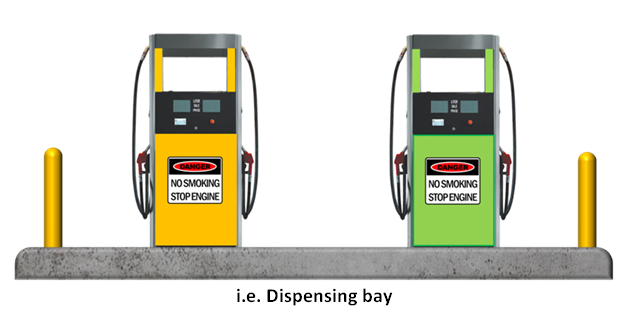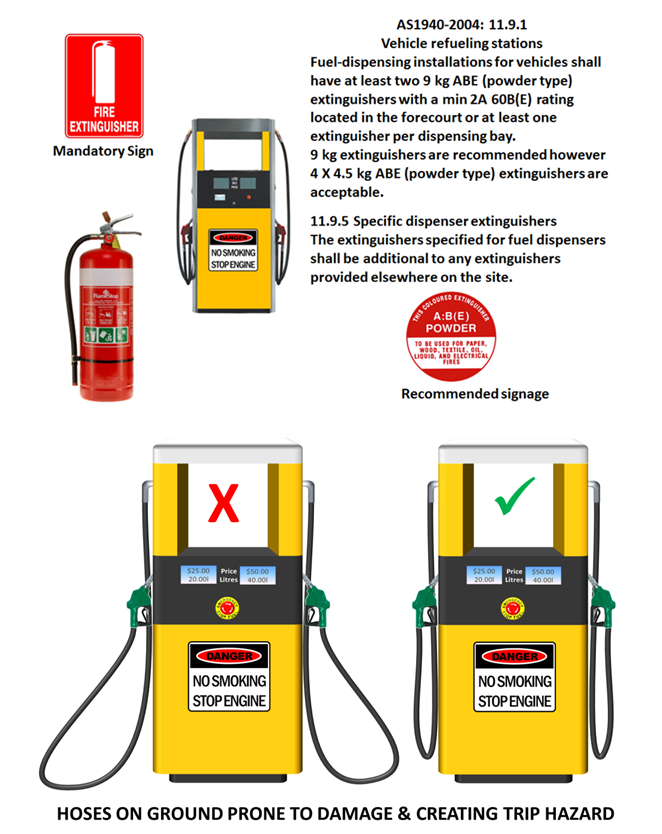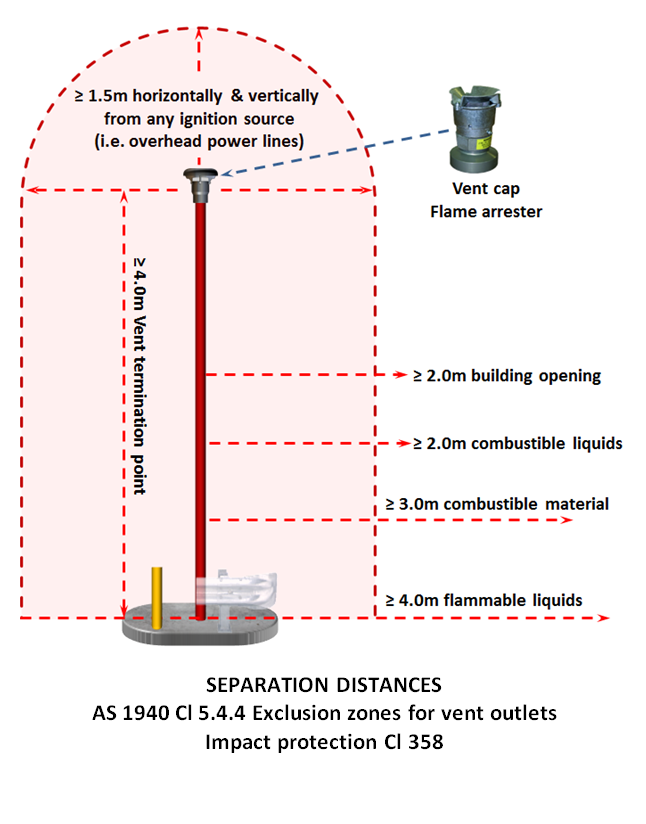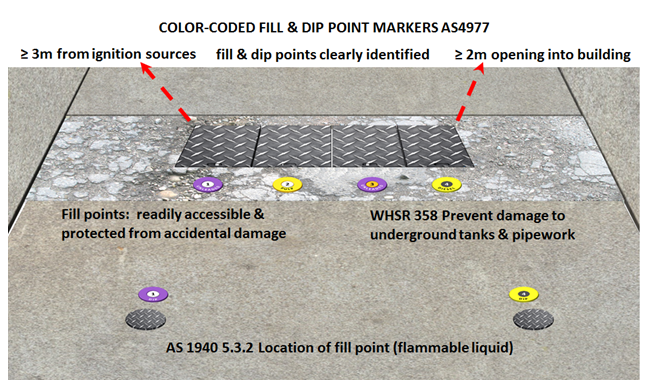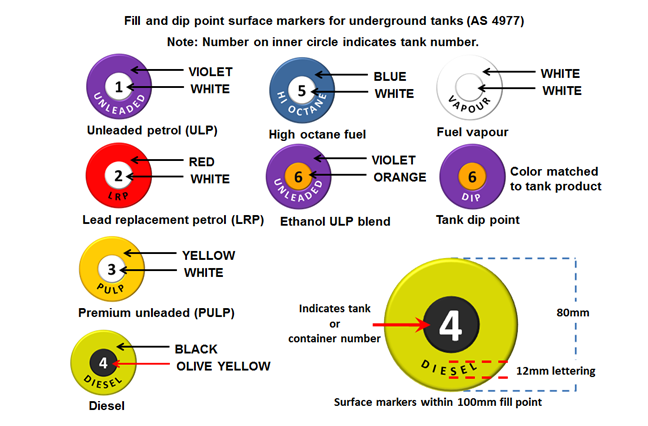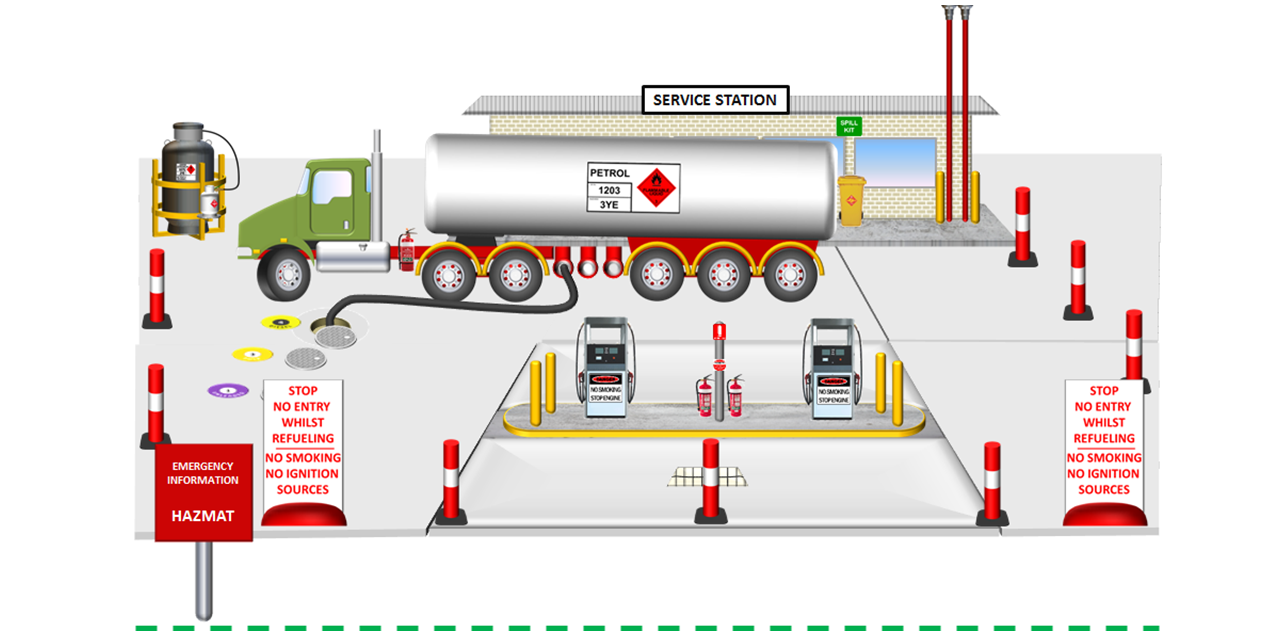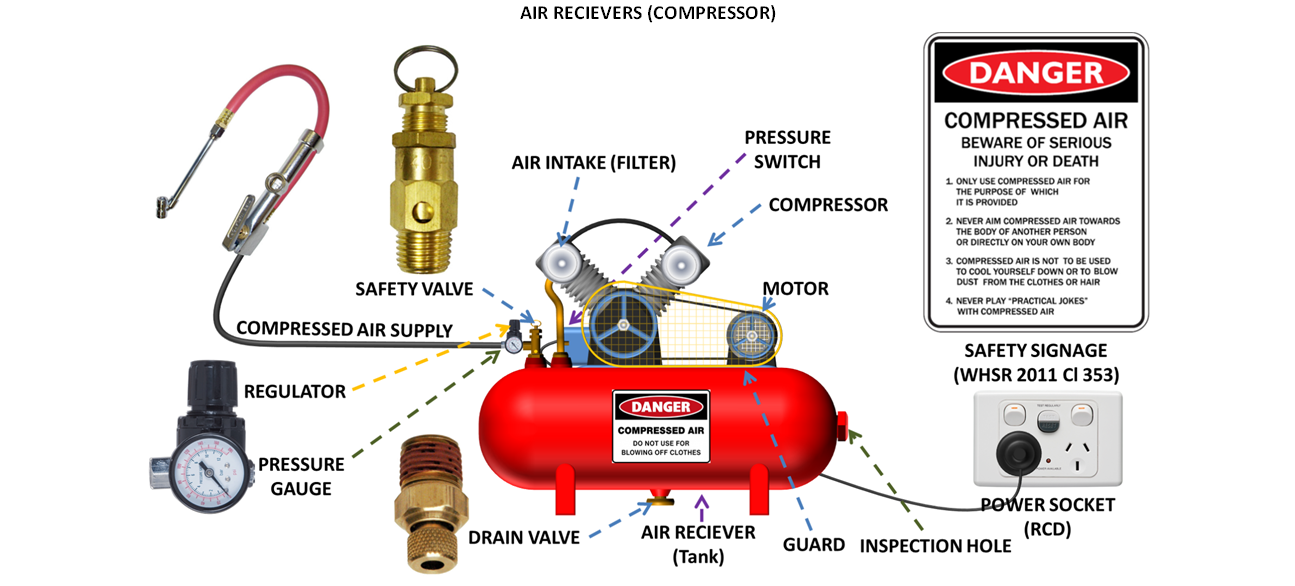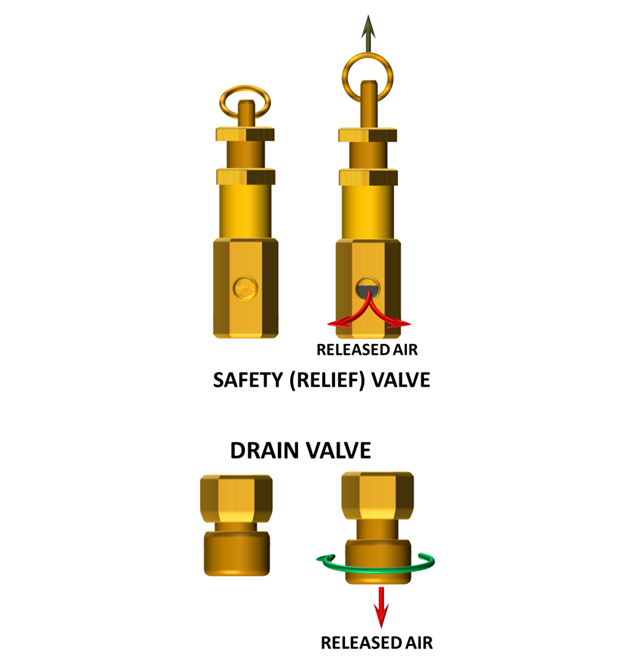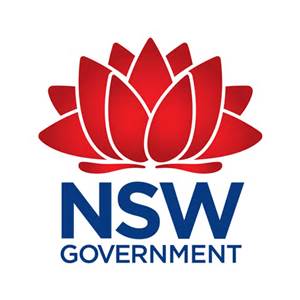Information
-
PCBU Trading Name:
-
Location
-
PCBU Registered Name:
-
ABN:
-
PCBU's Representative:
-
Contact Phone Number:
-
Email Address:
-
Workers Representative:
-
Conducted on
-
Inspection Conducted By:
Small & Remote Service Stations (Paperwork Audit)
Manifest Quantities of Hazardous Chemicals
-
1. Is there a manifest quantity of hazardous chemicals on site? WHS Regulation 2011, Schedule 11
-
Category & Quantity
- Category 1 flammable gases (i.e. LPG, Acetylene) in excess of5,000 litres
- Category 2 flammable liquids (i.e. Petrol, Acetone, Metho) in excess of 2500 litres
- Category 3 flammable liquids (i.e. Kerosene) in excess of 10,000 litres
- Category 4 flammable liquids (i.e. Diesel) in excess of 100,000 litres
- Combined quantity of category 1,2,3 flammable liquids in escess of 10,000 litres
Manifest of Hazardous Chemicals
-
2. Has the PCBU prepared a manifest? WHS Regulation 2011, Clause 347(1)(a)
-
Action / Notice / Comments
-
2a. Does the manifest contain all the required information? WHS Regulation 2011, Schedule 12. <br>Refer to Appendix 1
-
Action / Notice / Comments
-
Refer to Appendix 1
-
2b. Is the information up to date? (i.e. correct PCBU, fuel quantities, site plan) WHS Regulation 2011, Clause 347 (1)(b)
-
Action / Notice / Comments
-
2c. Is a copy of the manifest kept in an Emergency Services Information Cabinet (ESIC / Manifest box at or near the service stations entrance OR another position agreed to by Fire & Rescue (FR) NSW? WHS Regulation 2011, Clause 347 (3)(a)
-
Action / Notice / Comments
-
2d. Is the manifest readily available to emergency services? WHS Regulation 2011, Clause (3)(c)
-
Action / Notice / Comments
-
2e. Is it fitted with a 003 emergency services lock?<br>
-
Comments:
Notification to the Regulator
-
3. Has the PCBU notified SafeWork NSW? WHS Regulation 2011, Clause 348
-
Action / Notice / Comments
-
3a. Does the PCBU have an acknowledgement letter from SafeWork? Refer to Appendix 2<br>
-
Action / Notice / Comments
-
NDG No:
-
3b. Are the acknowledgement letter & manifest consistent? i.e. Same PCBU, fuel quantities, address.<br>
-
Comments:
-
3c. Is the information in the acknowledgement letter up to date? i.e. Current PCBU, correct fuel quantities.<br><br>
-
Comment:
-
3d. Is the acknowledgement letter and manifest consistent with the work site?
-
Comment:
Emergency Plans
-
4. Has the PCBU prepared & implemented an emergency plan? WHS Regulation 2011, Clauses 43(1) and 360.
-
Comments:
-
4a. Does the plan contain the required information? WHS Regulation 2011, Clause 43(1)
-
Comments:
-
4b. Has a copy of the emergency plan been sent to Fire & Rescue NSW? WHS Regulation 2011, Clause 361(2)
-
Comments:
-
4c.Does the PCBU have an acknowledgement from Fire & Rescue NSW?
-
4d. Has Fire & Rescue NSW recommended amendments to emergency plan? WHS Regulation 2011, Clause 361(3)
-
4e. Have those recommendations been implemented? WHS Regulation 2011, Clause 361(3)<br>
-
Comments:
-
4f. Are worker/s trained & / or competent to initiate emergency plan? WHS Regulation 2011, Clause 43(c)<br>
-
Comments:
-
4g. Are emergency drills carried out? WHS Regulation 2011, Clause 43(b)
-
Comments:
Hazardous Chemicals Register
-
5. Is there an up to date Hazardous Chemical Register on site? WHS Regulation 2011, Clause 346
-
Comments:
-
5a. Is it readily accessible? WHS Regulation 2011, Clause 346(2)
-
Comments:
-
5b. Does the PCBU have all the required Safety Data Sheets? WHS Regulation 2011, Clause 344(1)
-
Comments:
-
5c. Are they in an easily identifiable & readily accessible location? WHS Regulation 2011, Clause 344(3)
-
Comments:
-
5d. Are they up to date & in the correct format? WHS Regulation 2011, Clause 330(3) & Schedule 7.
-
Comments:
-
5e. Have they been reviewed by the PCBU?
-
Comments:
Consultation at Work
-
6. Does the PCBU have a consultative process in place?
-
Please provide comment:
First Aid
-
7a. Is the required first aid equipment on site? WHS Regulation 2011, Clause 42(1)<br>
-
Comments:
-
7b. Is there an adequate number of workers trained to administer first aid? WHS Regulation 2011, Clause 42(2)
-
Comments:
Workers Compensation & Return to Work
-
8a. Do the PCBU have a Workers Compensation Policy? Workers Compensation Act s155
-
Comments:
-
8b. Is there an Injury Register on site? WIMWC Act S63
-
Comments:
-
8c. Does the PCBU have a Return to Work Program? WIMWC Act S52
-
Comments:
-
8d. Summary of WIMWC Act displayed & policy details available to workers (If you get injured at work poster) WIMWC Act S231 (Refer appendix: 5)<br>
-
Comments:
Appendix 1 Manifest Check List
-
Manifest Checklist only
WHS Regulation 2011 Clause 347 Manifest of hazardous chemicals
WHS Regulation 2011 Clause 347(2) A manifest of Schedule, hazardous chemicals must comply with Schedule 12.
Schedule 12 (7) Manifest - plan of workplace -
Does the manifest contain a plan of the workplace?<br>
-
Is the plan to scale?<br><br>
-
Does the plan show True North?
-
Does the plan show location and ID No./code/description of bulk storage areas not in containers (e.g. stockpiles)?
-
This item is most likely required for a service station.
-
Does the plan show location and ID No./code/description of bulk containers (e.g. tanks and vessels)?
-
Does the plan show location and ID No./code/description of package and Intermediate Bulk Containers (IBC) storage areas?
-
This item is most likely required for a service station.
-
Does the plan show location and ID No./code/description of manufacturing areas?
-
This item is most likely required for a service station.
-
Does the plan show location and ID No./code/description of in transit areas?
-
This item is most likely required for a service station.
-
Does the plan show legend for identification numbers or codes used in the plan?
-
Does the plan show the main entrance and other entry and exit points to the workplace?
-
Does the plan show essential site services including fire services or gas supply?
-
Does the plan show location of isolation points for fuel and power?
-
Does the plan show location of all drains?
-
Does the plan show location of the manifest?
-
Does the plan show description of the nature of the occupancy of adjoining sites or premises?
-
Advisory Only - Is the plan laminated?
-
Advisory Only - Is plan A3 in size?
-
Additional Information:
Appendix 2 NDG Number
-
Example SafeWork NSW Acknowledgement Letter Page 1 of 3
-
Example SafeWork NSW Acknowledgement Letter Page 2 of 3
-
Example SafeWork NSW Acknowledgement Letter Page 3 of 3
Emergency Services Information Cabinet
-
Manifest Requirements:
Clause 347 WHS Regulation 2011 requires a PCBU that has manifest quantity of schedule 11 Hazardous Chemicals on site to prepare a manifest in accordance with schedule 12 & Keep it in a place determined in agreement with the primary emergency service organisation (NSW Fire & Rescue) -
References:
WHS Regulation 2011:
Clause 437 Manifest Requirements;
Schedule 11; and
Schedule 12 -
NSW Fire & Rescue
1. NSW Fire & Rescue recommend that PCBUs keep a copy of their manifest
a. in a prominently labeled weather proof red Emergency Services Information Cabinet (ESIC) / Manifest Box (See example)
b. Fitted with a 003 Emergency Service lock
c. at or near the sites main entrance/s
2. If this is done it the manifest is deemed to be kept in a place determined in agreement with the primary emergency service.
3. However if a PCBU wishes to keep the manifest anywhere else agreement must be sought.
Note this agreement is to Fire & Rescue NSW not the local brigade -
Example
Emergency Services Information Cabinet (ESIC) / Manifest Box -
Note: The outer warning placards (WHSR 349)are not required at retail fuel outlets (Service Stations)
-
Any Additional Information:
Fire Extinguishers
-
References:
WHS Regulation 2011, Clause 359
AS/NZS 1851 Routine service of fire protection systems and equipment
AS 2444 Portable Fire Extinguishers & Fire Blankets Selection & Location -
-
-
Selection (type & size) & location of fire extinguishers determined by a competent person?<br>
-
Evidence of routine servicing of fire extinguisher being undertaken by a competent person?<br>
-
Service records kept on site? WHSR Cl 359(1)(d) Fire protection and firefighting equipment?<br>
-
Maintenance tags indicate the appropriate services have been undertaken?<br>
-
Maintenance tags punched within the last 6 months? AS/NZS 1851 (S1.11).<br>
-
Extinguishers clearly visible from at least 20m?<br>
-
Extinguishers located in a conspicuous & readily accessible position?<br>
-
If practicable, extinguishers located along normal travel paths & near exits?<br>
-
Extinguishers not located in positions where access could present a hazard to potential users?<br>
-
Extinguisher correctly mounted?<br>
-
Extinguishers are the correct class & rating?<br>
-
Operators trained & competent in the selection & use of fire extinguishers ?
-
Signage, appropriately located, legible, clearly visible?<br>
-
WHSR 2011, Cl359(1)(c) the fire protection & firefighting equipment is properly installed, tested & maintained?
Spills Containment & Clean Up
-
-
Spill Kits can incorporate a 003 key to prevent customers using as a rubbish bin.
Spills kit maybe kept inside however it must be readily accessible & a sign should be erected in the forecourt indicating its location. -
Are spills containment procedures in place? (WHSR Cl 357 (1) <br>
-
Are those procedures adequate?<br>
-
Are operators trained & competent in those procedures?<br>
-
Is there spill containment & clean up equipment available on site? (Cl 357(3)) <br> i.e. spills kit, PPE<br><br>
-
Is the equipment suitable for containing fuel & oil spills? (hydrocarbon) (Site risks)<br>
-
Is there sufficient equipment available?<br>
-
Is the equipment in an easily identifiable & readily accessible position?<br>
-
Is there sufficient & appropriate signage in place?<br>
-
Is it suitably located?<br>
-
Are their provisions is place for the disposal of the waste material?<br>
-
Are there procedures in place for the replacement of used or damaged equipment ASARP?<br>
-
Is there sufficient & appropriate PPE available? <br>i.e. safety glasses, face shields, respirators, chemical resistant gloves & boots, high vis vests etc.<br><br>
-
Is there sufficient equipment in place to isolate the area around a spill?<br>i.e. witches hats, tape, bunting, signage<br><br>
-
Are shovels, dustpans, brooms, etc used to clean up a spill “non-spark”?<br>
-
Is there an instruction sheet with spill kit?<br>
-
Is there equipment to isolate spill area (i.e. witches hats, barriers, tape, signage etc) available?
Fuel Dispensers (Bowsers) for Flammanble Liquids
-
-
-
-
All operators at least 16 year old? (WHSR 336)<br>
-
Potential ignition sources controlled (WHSR 355)<br>
-
≥ 4m Separation from ignition sources maintained? (WHSR 355)<br>
-
Mandatory safety sign in place? (WHSR 353)<br>
-
Signage properly located?<br>
-
Signage legible?<br>
-
Remote emergency power cut-off available? <br>
-
Remote emergency power cut-off suitably located?<br>
-
Remote emergency power cut off location easily identifiable & readily accessible? <br>
-
Workers suitably trained & / or supervised?<br>
-
Min 2 x 9kg AB(E) or 4 x 4.5kg fire extinguisher readily accessible in forecourt? (WHSR 359) <br>
-
Additional fire extinguisher available if more than two dispensing bays on site? (1 per bay)<br>
-
Fuel Nozzles (No latching devices attach) only able to be held open by operators hand?<br>
-
Impact protection in place? (WHSR Cl 358)<br>
-
Underground tanks & pipework Protected from damage? (WHSR 2011 Cl 358)
-
Emergency power cut offs on bowsers (Customer fill only)<br>
-
Hoses not lying on ground (prone to damage & creating trip hazard<br>
-
Min lighting 50 lux<br>
Flammable Liquid Underground Vent Pipes
-
-
Potential ignition sources Controlled (WHSR Cl 355)<br>
-
Separation distance maintained AS 1940 Cl 5.4.4 Exclusion zones for vent outlets ?<br>
-
Vents away from trafficable areas or protected by bollards or barriers etc.? WHSR Cl 358)<br>
-
Vent terminal point’s ≥ 4m above ground?<br>
-
Vent pipes against a wall secured to it?<br>
-
Underground tank & pipework protected from damage? (WHSR 358)<br>
Flammable Liquid Underground Storage Tank Fill & Dip Points
-
-
-
Fill & dip points clearly identified? Ref: AS 4977-2008 cl 3.2 & figure 3.1<br>
-
Surface markers within 100mm of fill & dip points<br>
-
Fill & dip point surface makers color coded in accordance with AS 4977<br>
-
Fill & dip points readily accessible?<br>
-
Fill & dip points protected from accidental damage? (WHSR Cl 358)<br>
-
Fill & dip point’s ≥ 3m from ignition sources? (WHSR Cl 355)<br>
-
Fill & dip point’s ≥ 2m from openings into buildings?<br>
-
Underground tank & pipework protected from damage? WHSR 358)<br>
-
Area around fill & dip points free of debris, water & other potential contaminates?<br>
-
Fill & dip points sealed to prevent vapor release?<br>
Bulk Fuel Transfer (Flammable Liquid)
-
-
-
Are safety procedures in place for transferring of bulk fuel from tanker to tanks?<br>
-
Are those procedures documented?<br>
-
Are operator/s able to describe those procedures?<br>
-
Is there a designated area for transferring of bulk fuel from tanker to tanks?<br>
-
Are potential ignition sources Controlled? WHSR Cl 355 (AS 60079.10.1)<br>
-
4m exclusion zone (ignition sources) from tanker discharge point (exclusion zone defined)<br>
-
3m exclusion zone (ignition sources) from tank fill point<br>
-
Is exclusion zone clearly identified? (I.e. demarcation lines, witches hats, signs etc.)<br><br>
-
Does exclusion zone extend over driveway or a fuel dispensing area?<br><br>
-
If yes are vehicles & pedestrians not involved in the procedure prevented from entering zone?<br>Note: station needs to be closed or bulk fuel transfers performed out outside operating hours<br><br><br>
-
Are tankers parked wholly within property during discharge process?<br><br>
-
Are there systems to prevent tanker movement during discharge process? (i.e. handbrake on)<br><br>
-
Is tanker able to travel (or be towed) forward to exit site (emergencies)?<br><br>
-
Is tankers exit path unobstructed at all times during transfer process?<br><br>
-
Are there procedures in place to ensure no persons remain in tankers cabin during transfer?<br><br>
-
Is operator/driver able to view discharge & fill points during discharge process?<br><br>
-
Driver able to stop discharge process if an emergency occurs?<br><br>
-
Is there adequate fire fighting equipment available during discharge process?<br><br>
-
Is discharge process monitored to prevent fuel overflow, spillage, or excessive tank pressure?<br><br>
-
Flexible transfer hoses not running under tanker?<br><br>
-
Is there a system in place to prevent the buildup or discharge of static electricity?<br><br><br>
-
References:
Australian Dangerous Good code Chapter 10 - Transfer Requirements
AS/NZS AS/NZS 60079.10.1:2009 Explosive atmospheres
Part 10.1: Classification of areas— Explosive gas atmospheres
AS 1940 - 2004 the storage and handling of flammable and combustible liquids
WHSR Cl 355 -
Notes:
If the exclusion zone extends over the service station driveway or a fuel dispensing area, vehicles must be prohibited from entering that area. The service station may need to be shut down for the duration of the tank filling operation or the tank filling operation carried out outside of normal operating hours.
The tanker delivery driver and site operator must have a clear understanding of where the exclusion zone extend to and provide adequate barriers (e.g. witches hats) and warning signs for the duration that transfer hoses are connected.
AS 1940 9.18 BULK TRANSFER
9.18.1 General requirements
Safe filling and emptying procedures for tanks and tankers shall be established on the basis of the following requirements:
(a) A safe filling level that allows for thermal expansion shall be established, and shall not be exceeded.
(b) Filling and emptying flow-rates for which the tank vents were designed shall not be exceeded.
(c) Filling shall be monitored and controlled so as to prevent the occurrence of overflow, spillage, or excessive pressure in the tank.
(d) The recommendations of AS/NZS 1020 and the requirements of the ADG Code shall be observed wherever applicable.
9.18.2 Control of static electricity
The requirements of AS/NZS 1020 and AIP CP8, as appropriate, shall be observed when transferring flammable or combustible liquids into any container or tank to control and safely dissipate any static electricity generated during the operation.
9.18.3 Continuity testing
Tests shall be carried out at intervals of not more than six months to ensure that earthing and bonding is effective and that the resistance between a vehicle tank and earth is not greater than 1MΩ.
9.18.4 Restrictions on vehicles in tank vehicle filling facilities
The following restrictions apply to vehicles in filling facilities handling flammable liquids:
(a) A tank vehicle shall be positioned at all times so that in an emergency it can be driven or towed straight out without recourse to reversing.
(b) The tank vehicle should be driven forward into the tank vehicle filling area rather than being backed in. Where the layout makes this impossible, so that reversing is unavoidable, a person shall be stationed to guide the driver while reversing.
(c) No vehicle, including tank vehicles, shall be maintained or serviced whilst in the tank vehicle filling facility except for the refueling of the vehicle running tank.
(d) No vehicle, other than a tank vehicle, a vehicle associated with maintenance of the filling facility or an emergency services vehicle, shall be permitted to pass through or stand in a dedicated vehicle filling facility, consisting of two or more filling positions.
(e) A tanker containing product shall not park or stand in or under a filling facility other than when filling or draining.
(f) Where a flammable liquid spill occurs at the filling facility while a tank vehicle is standing therein, the vehicle engine shall not be started until the spill has been satisfactorily cleaned up, except in the case of an emergency.
The requirements of Items (c) and (d) may be varied by the use of a work permit.
Where a filling facility has been constructed for combustible liquids only and it is separated from a flammable liquid filling facility by more than 15m, the requirements of Items (d), (e) and (f) shall not apply
Air Recievers
-
-
-
References:
AS/NZS 3788:2006 Pressure equipment – In-service inspection.
AS 4343 2014: Pressure equipment – Hazard levels.
SafeWork Australia Information Sheet “Compressed Air and Air Receiver”
Compressor Checks
-
Unit away from trafficked area or impact protection in place?<br>
-
Unit secured against movement?<br>
-
Unit in an area free of airborne or other contaminants (hazardous chemicals, dust, fumes etc.)<br>
-
Unit readily accessible?<br>
-
Air filter/s in place and in good condition?<br>
-
Pressure gauge undamaged & fully operational? (max pressure clearly marked)<br>
-
Regulator undamaged & fully operational? (no evidence of tampering)<br>
-
Safety valve (Pressure relief) undamaged & fully operational? (no evidence of tampering)<br>
-
Drain valve undamaged & fully operational? (no evidence of tampering)<br>
-
Air receiver undamaged? (No dents, corrosion, distortion, holes, leaks, stress fractures etc.)<br>
-
Fan belt/s & pulleys adequately & securely guarded? (If applicable)<br>
-
All piping & valves in serviceable condition? (no corrosion, distortion, leaks etc.)<br>
-
Compressed air supply line/s & fittings in good condition & if applicable adequately secured?<br>
-
Noise issues identified?<br>
-
Electrical plug & lead in good condition? (tested & tagged/recorded in register)<br>
-
On/off switch in serviceable condition & easily identified & accessible position?<br>
-
On/off switch in serviceable condition & easily identified & accessible position?<br>
-
Evidence of routine maintenance identified? (i.e. completed logbook, service record)<br>
-
Operation &/or service manual available to workers?<br>
-
Safety signage in place?<br>
Operational Checks: Have the operator turn it on a demonstrate the following:
-
Check that it is running smoothly (i.e. no excessive noise or vibration)<br>
-
Check that pressure gauge is working <br>
-
Check that units motor cuts out before maximum working pressure is exceeded<br>Note: If max pressure is exceeded This may indicate that regulator has been damaged or tampered with &/or pressure switch is faulty &/ or relief valve is not working correctly<br><br><br>
-
Check gauge to ensure pressure does not drop whilst unit is not being used <br>Note: If pressure drops &/or motor cuts in this may indicate that the unit is losing air <br>(i.e. leaking valves, hoses, fittings, air receiver etc.)<br><br>
-
Have operator open relief valve and check that air is escaping through valve & air pressure is <br>dropping<br><br>
-
Once air receiver is free of compressed air have operator open drain valve & check that valve opens easily & excessive condensation, oil or other contaminants are not released as this may indicate that valve is not routinely opened & the air receiver drained.
-
Note:
1. condensation if not removed routinely it will led to corrosion inside the air receiver
2. Oil inside the air receiver may indicate that there is excessive wear inside the compressor
Note:
If safety valve opens before units motor cuts out the pressure switch may be damaged






